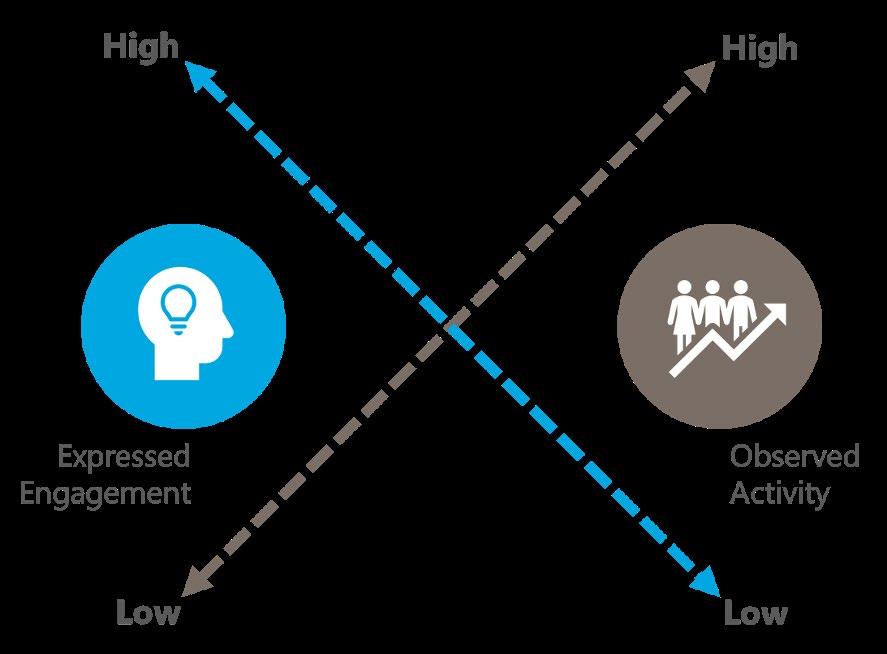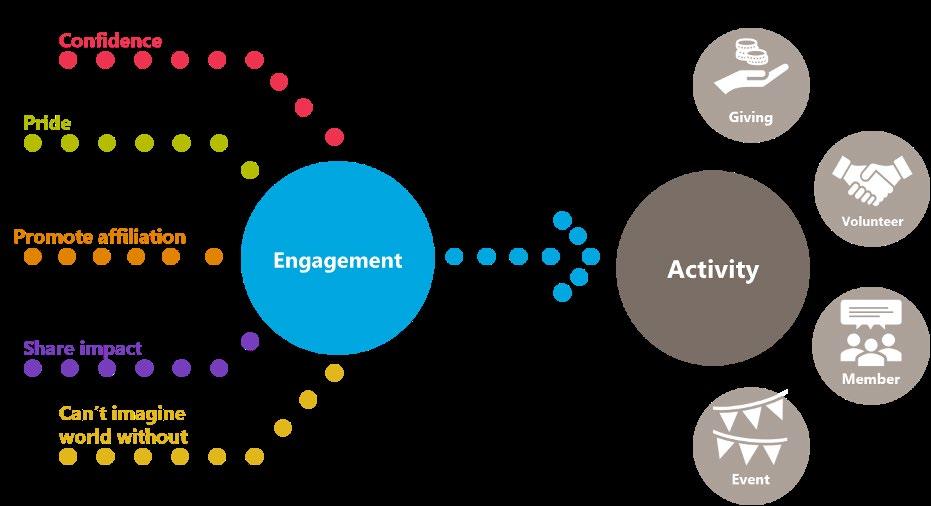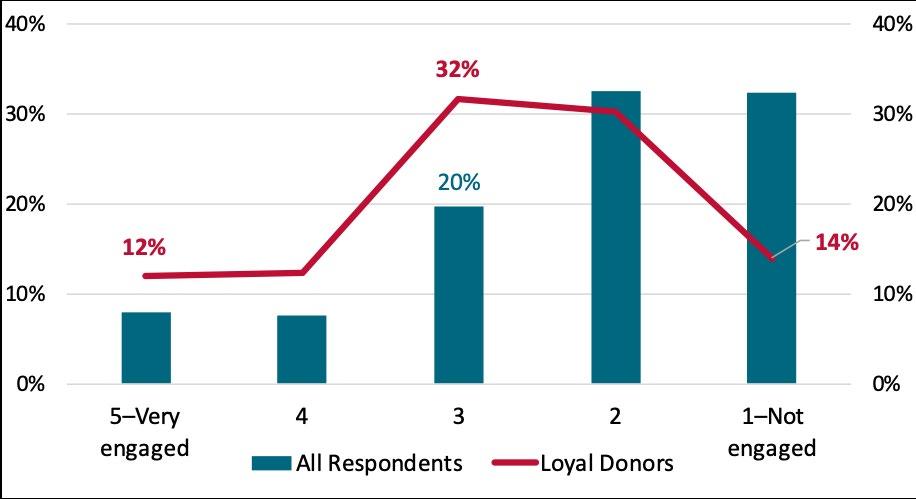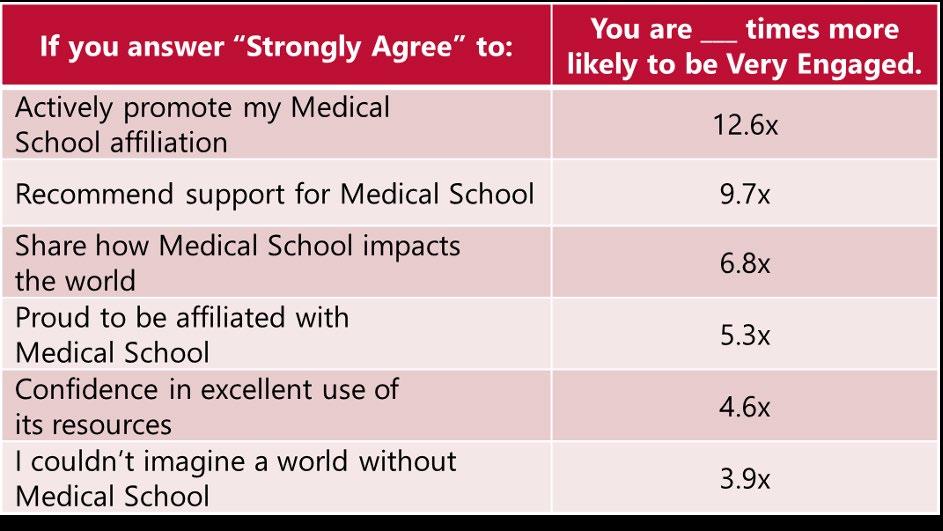
6 minute read
The Next Generation of Analytics: The Quantification and Analysis of Donor Engagement
By Betsy Rigby and Alex Oftelie
Data and fundraising, once thought an anathema to each other, were forever joined as many as 15 years ago when the science of analytics was first applied to the art of fundraising. Analytics can provide us insight at scale to meet the size of our databases, helping us extend the reach of our knowledge and experience beyond what we would otherwise be able to do. It takes the information we collect in our donor databases and turns it into actionable knowledge that informs strategy, and sets many organizations on new paths to success.
One of the great strengths of analytics is its reliance on existing data that we already have recorded and ordered—giving history, event attendance, participation on boards or committees, membership in a giving society— from which we can quantify an individual’s level of connection to our organization. Analytics informs campaign goals and clarifies fundraising potential. It re-focuses stewardship efforts. It re-examines which donors are targeted. It identifies prospects already on file but not being cultivated.
In fact, the fundraising field—and especially larger shops—has become incredibly proficient with analytics. We have seen analytics evolve from a project, to a process, to becoming an integral part of strategic fundraising and welldeveloped programs. With this implementation success, a new challenge emerges. Analytics has been revised and optimized where now many shops have reached their reasonable maximum efficacy: we have “mastered” traditional analytics.
We have reached this point, in part, because of one of the great limitations of analytics. It reflects traditional CRM data storage, and captures only who people are, and what they have done. Traditional analytics provides measures of connection based on what has happened, but does not necessarily reflect how the donor feels about the organization at any given time. Does the donor who looks connected actually feel
connected? Should we consider everyone who is not philanthropically engaged today to be poor prospects for the future as well?
Sentiments of engagement are, in fact, the core drivers of philanthropic activity. Think of your alumni donor who loyally gives $1,000 annually, and is a member of one of your giving societies that recognizes a long-term commitment to the university. “Dennis” meets a number of criteria so that staff who look at the attributes of his record count him as satisfied and committed. However, when asked how he feels, Dennis reports his level of engagement with his alma mater at a two out of five. He acknowledges that, were he to feel four or five out of five, he would be giving at a higher level and likely to have made a planned gift. Dennis has an Engagement Imbalance.

We posit the next level of analytics is the quantification and analysis of donor engagement.
By asking donors to score three questions on a simple scale of 1–5, we can better determine their level of personal commitment to our organization:
1. How engaged are you by this organization?
2. How core is the mission to your identity?
3. How proud are you to be affiliated with this organization?
These results can then be analyzed against existing philanthropic activity and demographics, providing opportunities for deep segmentation on key areas of opportunity and highlighting the core areas to address misalignment.

Further, we estimate, regardless of size or mission, that institutions have an approximately 20–40% Engagement Imbalance in their constituencies.
For example, a recent survey of a children’s hospital in the Midwest found respondents have deep pride in their affiliation with the institution and agree in the essential impact of the hospital—sentiments that are leading indicators of philanthropic support. Overall, only 14 percent of respondents rated themselves as Very Engaged. Those who did express that they felt very engaged demonstrated that they are four times more likely to be a loyal donor, three times more likely to be a donor for ten years or more, and three times more likely to have a donor lifetime value 300 percent greater than less engaged constituents. By projecting the rates of survey respondents to the entirety of the donor file, we projected one in five constituents has an engagement imbalance, with the predominant area of opportunity in the activation of
constituents who perceive themselves as highly engaged with the hospital but whose records demonstrate low activity (giving, volunteering, attending events, etc.). By identifying donors who feel engaged but are not yet actively supporting the hospital, the institution can prioritize their cultivation and stewardship, realizing an expected net gain in revenue.
A prominent medical school in the Northeast also found previously unidentified engagement opportunity within their most loyal donor populations. Among supporters defined as “loyal donors,” or those who have given every year of the last five years, more expressed feeling Not at All Engaged (14%) than feeling Very Engaged (12%).

This provided insight that even with populations who behave in the most connected ways, there was still significant opportunity to increase their engagement, which would ultimately increase their donor lifetime value. With the overall positive relationship between engagement and philanthropy demonstrated—the more you’re engaged, the more you give—they now view driving engagement as a key metric for increasing support. What drives engagement?
While there are factors external from development that impact engagement (experience and/or perceptions of clinical quality, positive or negative news stories), development can also micro-target drivers of engagement, directly messaging supporters and others on themes with the greatest impact. For the medical school, supporting constituents in their ability to share their own support were the strongest drivers of engagement.
A supporter who said they “strongly promote their affiliation” were over 12x more likely to selfrate as Very Engaged. Enablement of “micromarketing” and opportunities to allow supporters to carry the school’s message and share their pride now become targeted outcomes. Learn what drives engagement, execute, and then drive philanthropy.

The most distinctive and impactful value of this kind of analysis is connecting what people perceive (survey) with who they are and what they do (internal data). When we can develop insights that focus on the similarities and differences between feeling and action, and discover drivers of important outcomes, we can create actionable strategies on who to prioritize and how to cultivate and steward them. Measurement of engagement therefore provides the next opportunity to identify prospects and uncover opportunities previously “hidden” when only using traditional analytics.
Alexander W. Oftelie, senior vice president of decision science at BWF Insight, oversees all analytics engagements, workshops and trainings, and product implementation. His specific areas of expertise include predictive modeling, business impact analysis, survey design and sampling methodology, analytics training, and analytics implementation.
Betsy T. Rigby, associate vice president at BWF, has worked exclusively in fundraising for more than 30 years. She spent half of her career in leadership fundraising roles for a range of Boston-area nonprofits and spent the other half of her career with the Partners HealthCare system in operational roles.










